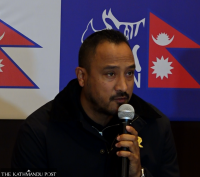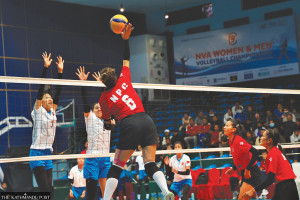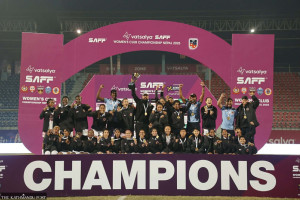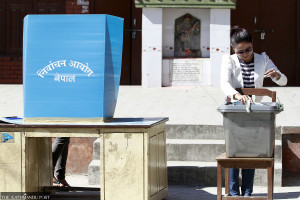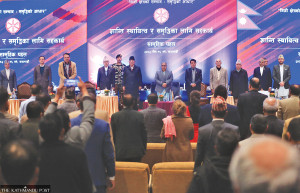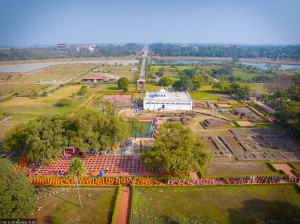Sports
South Asian Games drawing close, but players lack match experience: Coaches
With increasing global interest in kabaddi, the sport is still only popular in movie titles in Nepal.
Prarambha Dahal
Despite marking its debut at the second edition of the South Asian Games held in Bangladesh in 1985, kabaddi, the contact sport still played during school leisures in the Indian subcontinent, had missed out from the fifth Games held in Sri Lanka in 1991. In 1990, when the sport was first included in the Asian Games in Beijing, Nepal finished fourth.
Once favourite pastime in South Asia, kabaddi, now with revamped rules, playing surface and presentation, is finding a growing interest, even witnessing the participation of western countries including the United States and England.
But as Nepal makes its final preparations to host the 13th South Asian Games in Kathmandu and Pokhara next month, those who play the sport and train the players have more grievances than podium aspirations.
Currently facilitating the training of a team of 16 players each in the men’s and women’s category at the covered hall of the National Cadet Corps in Sundhara, head coach Tara Singh Bhat still appears hopeful of medals from Nepal.
“India is a powerhouse in kabaddi. Despite Pakistan, Bangladesh and Sri Lanka also at a better level than us, we have beaten them in the past,” Bhat said. “But for us to have better chances at the Games, we must go train in India.”
Unlike other sports, kabaddi does not require much investment and the players and coaches do not need to travel very far to play against better oppositions to enhance their quality. But the sport governing bodies appear to have remained indifferent in helping the national teams set up a training camp in India.
“Other nations contesting at the SAG have been preparing in India since last month, so they are likely to have an advantage,” Bhat said. “We just don’t have any match experience yet and this needs to be sorted out soon.”
Bhat says that unlike India, Nepal hasn’t been able to take kabaddi seriously. His immediate reference is to the Pro Kabbadi League, which modelled its business on the Indian Premier League of Twenty20 cricket and quickly became a rating success on Indian television. Today, it is watched by at least 435 million viewers over the course of the debut season from across 100 nations.
“They have sound models in place at regional and age-group levels with regular tournaments which helps them produce great prospects,” he said. “There simply is a lot to learn to bring kabaddi back to life in Nepal.”
Jaya Bahadur Bohara, a bronze medallist in the 11th South Asian Games, has played three seasons in the PKL. A raider, Bohara has been sharing the knowledge he gained during his time at the PKL with his Nepali teammates.
“We must have regular kabaddi tournaments at school levels. With the involvement of the private sector in kabaddi, we can definitely create scope for kabaddi players in Nepal,” he said.
Kosh Maya Basnet, who is in the women’s team and has played kabaddi for 11 years, says the sports must be prioritised by national sports authorities.
“I also urge the public to look at kabaddi as a professional sport and suggest aspiring kabaddi players take the sport because there is scope,” she said. “We have Nepalis playing at international kabaddi leagues which means there are better opportunities.”
Assistant coaches Moti Raj Paneru, Bishnu Dutta Bhatta and Lok Bahadur Bista agree and call on the National Sports Council to ensure regular tours of Nepali team in several parts of India where the quality of the game is better by a mile.
With Bohara and Lal Mohar Yadav now regular features at the PKL, Nepali players have considerably lifted their performance and skills. Nine years ago, they surprised many fans when they won the bronze medal at the 2010 South Asian Games. It was only two years ago in 2017 when Nepal secured a second-place finish at the International Invitational Men's Kabaddi Tournament.
The feat, despite several limitations, had given a small ray of hope for the growth and popularity of the sport in the country. But with limited training and experience, the upcoming Games are certain to be yet another acid test.
“Lapse of coordination among the governing bodies is a major hurdle as of now,” Paneru said. “Only timely exposure for our players against better teams help produce better results.”




 7.47°C Kathmandu
7.47°C Kathmandu





